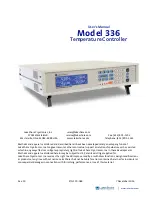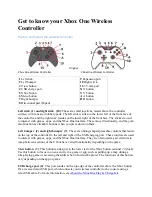
AFR200 Series, Product User Guide
This document is subject to change without notice.
Caution: None of GAC products are flight certified controls including this item
Copyright © 2010, Governors America Corp., All Rights Reserved
35
PUG4144 D
7.4.2 Installation Instructions
1. Apply thread sealant to the tee-fittings if applicable but not the sensor threads.
2. Thread the sensor finger tight into the drilled/tapped location from the application considerations.
•
The sensor is easily damaged so take caution when installing the sensor.
3. Using the appropriate wrench, torque the sensor to 30 N•m into the designated location. Take care not to
over-torque since the sensor can be damaged.
4. If the sensor is installed by teeing in to a coolant line ensure that the fittings are all torqued down correctly
and the coolant temperature is securely mounted.
5. The required electrical connections to the sensor are a pair of 1/4” female insulated quick connect
terminals. Connect the signal and ground terminals accordingly.
6. Refill the engine cooling system for any lost coolant. Once the engine is started make sure to top off the
cooling system and check for any coolant leaks.
7.5 Engine Oil Pressure Sensor (EOP)
The engine oil pressure sensor is an optional sensor available from GAC. The engine oil pressure sensor is
monitored by the AFR for engine protection in the event of a low oil pressure condition during operation. These
limits can be calibrated within the AFR controller using SmartVU. A representation of the engine oil pressure
sensor is shown in the following figure.
Engine Oil Pressure Sensor
7.5.1 Application Considerations
•
The oil pressure sensor should be located in a pressurized oil galley or a location representative of the
actual engine oil pressure (not conditioned or restricted by some device).
•
The sensor is mounted via a 1/8-27 NPTF fitting as shown in the following figure
.













































